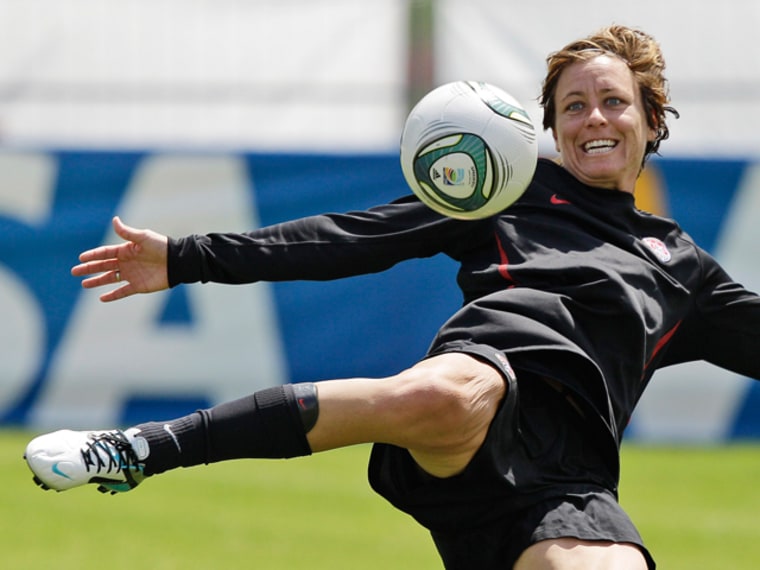If you’ve seen a soccer match, you’ve probably seen this scene play out: a grown man falls to the turf, clutching his lower leg in apparent agony, only to walk away seconds later, unharmed.
Such “embellishment,” as it is known, can border on absurdity, but players have been running this gambit for years in an attempt to gain sympathy from the match referee.
But women don’t play that game.
In a discovery that gives us yet another reason to watch Wednesday’s Women’s World Cup action, researchers in Germany have found that women are much less likely to engage in this sort of ridiculous behavior.
Sports scientists at the Chair of Training Science and Sports Informatics at Technische Universität München studied 56 football games, timing stoppages in play. When they compared this data between genders, they found, among other things, that women are much less likely to roll around on the ground like they are engulfed in flames than their male counterparts.
No matter the reason for the stoppage in play -- a substitution, a goal, a throw-in, or a foul -- female players will restart play at a much quicker rate. The difference for “injuries” is much more pronounced -- men spend on average 30 seconds longer on the ground.
According to lead researcher Martin Lames, the women’s desire to get on with it results in a faster, more entertaining match.
“As one hardly notices stoppages below 10 seconds there is an impression of a more continuously running game,” Lames wrote in an e-mail. “If one’s interest is more a matter-of-fact one, i.e. in the game itself, women’s games will be more appreciated.”
“Especially if one is offended by pretending to be more injured than is really true, arguing with the referee, spitting on the pitch, demanding yellow cards for the opponent and so on,” Lames adds.
Lames cites increased spectatorship and media attention as the primary reason the fellas resort to showmanship. On the guys’ side, his study used matches from German champion Bayern München, who average nearly 70,000 fans per match. With such a crowd, playing to the fans with an elaborate or drawn out goal celebrations is a “tacit norm,” Lames said.
However, the ladies’ sporting behavior can also be to their detriment. Male players commonly use game-delaying tactics (unnecessary shoe-tying, “dropping” the ball before a throw-in, etc.) to waste time when their team has the lead late in the match. Commonly referred to as “gamesmanship,” Lames’ study did not observe this phenomenon in the women’s game.
That’s not to say it never happens. Brazil’s Erika was widely panned for simulating injury deep into the overtime period against the United States.
Soccer detractors commonly point to embellishment as one of the game’s biggest flaws. The women, it seems, have trumped the men in this regard.
As if we needed another reason to watch this sensational U.S. World Cup squad.
Andrew Winner is a freelance soccer writer. Follow him on Twitter: http://twitter.com/#!/AndrewWinnerMLS
Related:
Want more weird health news? Find The Body Odd on Facebook.
